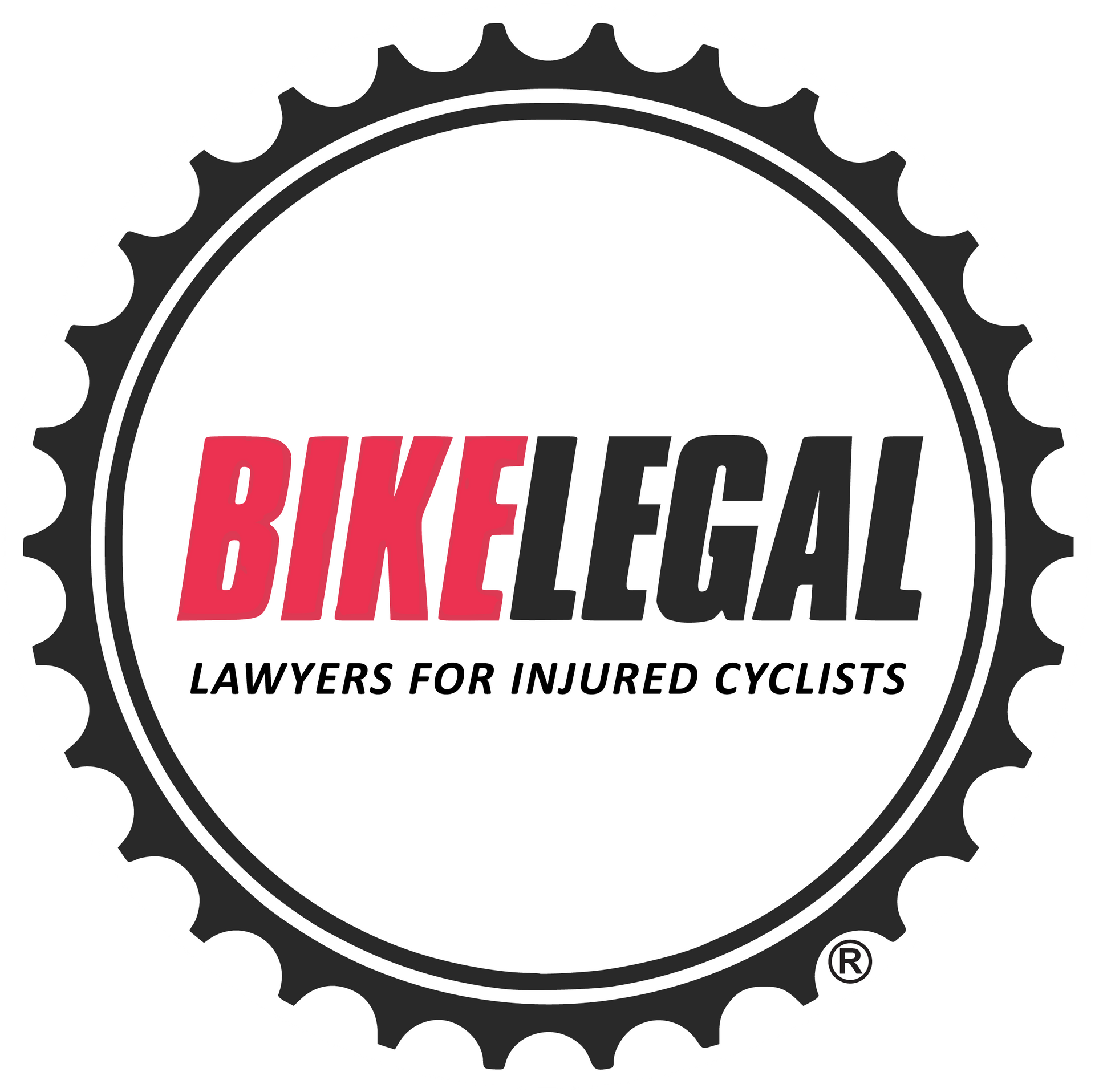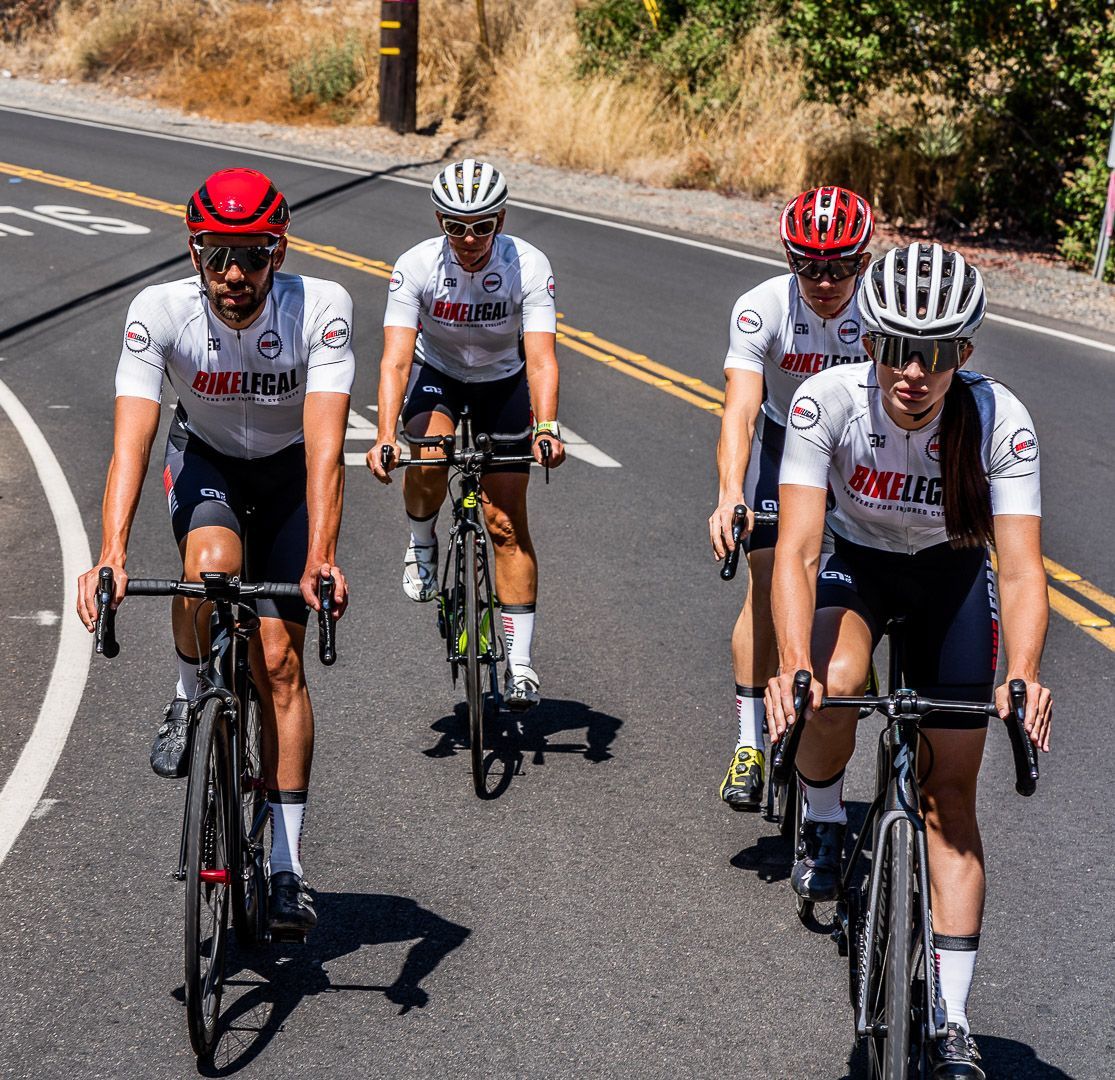California E-Bike Laws 2025: New Rules, Restrictions, and Safety Requirements
Follow us on
social media!
California’s e-bike laws are undergoing a significant overhaul in 2025, affecting how electric bikes are classified, who can ride them, and where they’re permitted to travel. With a surge in e-bike injuries, many of which involve children, lawmakers have introduced stricter safety regulations, including limits on motor power and requirements for battery certification.
The spike in e-bike crashes is part of a broader trend affecting cyclists statewide. For a full picture, review our analysis of California bicycle laws and crash data.
Whether you’re a first-time buyer or a daily rider, understanding the latest California e-bike rules is essential to staying legal and safe on the road. This guide breaks down everything you need to know about the updated laws, including new restrictions, age and helmet mandates, and what happens if your e-bike is modified beyond legal limits.
A quick breakdown of what you’ll learn:
- California’s three e-bike classifications, and who can legally ride them
- Where electric bikes are allowed (and restricted) across bike paths, roadways, and trails
- What the new laws—SB 1271 & AB 1774—mean for how your motorized bicycle must be built, powered, and sold
What Is an E-Bike?
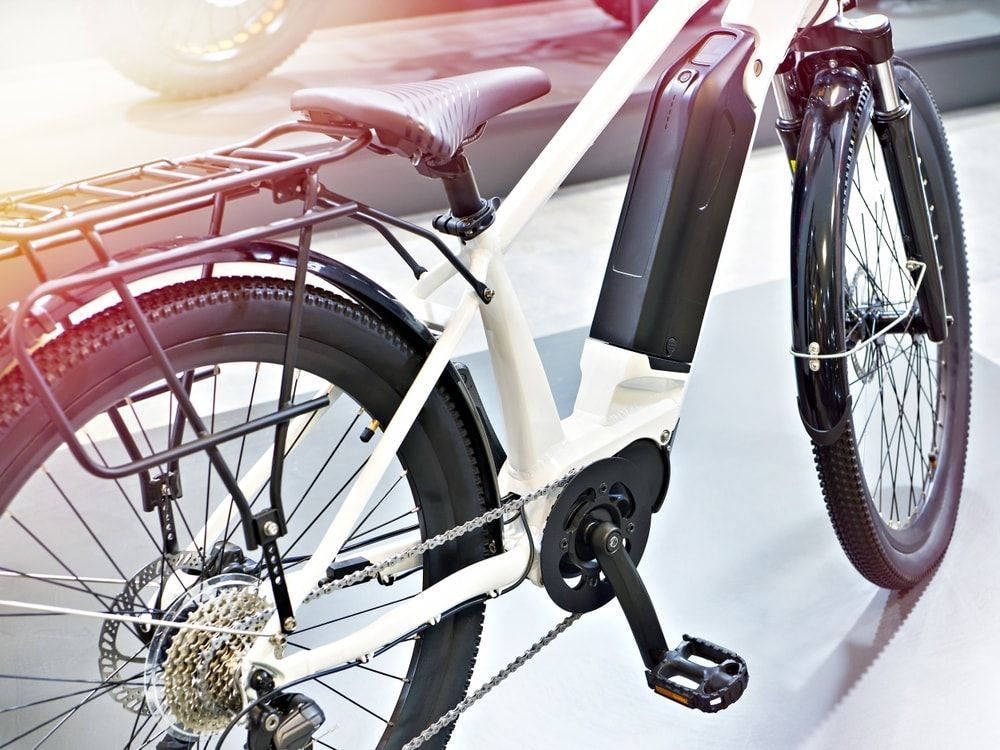
An electric bicycle, or e-bike, is a bicycle equipped with a small electric motor that provides assistance while you pedal.
Unlike mopeds or motorcycles, e-bikes must have fully operable pedals and are only considered legal under California law if they meet certain speed and motor power limits. You still pedal to engage the motor.
Here are some key features that define an e-bike in California:
- E-bikes are not mopeds. They do not require a license, registration, or insurance, as long as they stay within legal limits.
- They must have working pedals. If the pedals are removed or non-functional, the vehicle may be reclassified and subject to DMV regulations.
- Motor assistance only kicks in when pedaling (except for Class 2 e-bikes, which may also operate via throttle).
- Top speed is determined by e-bike class:
- Class 1 & 2: Motor assistance up to 20 mph
- Class 3: Pedal-assist only, up to 28 mph, and must include a speedometer
In short, e-bikes offer the freedom and flexibility of traditional cycling, with an added boost. But to stay legal in California, your e-bike must follow specific classification, speed, and equipment rules outlined in the California Vehicle Code.
Do you need a license for an electric bike in California?
The answer is no, as long as your e-bike meets state regulations for speed (28 mph or less) and motor wattage (750W or less). If it exceeds these limits, it may be legally reclassified as a motor vehicle, triggering license, insurance, and registration requirements.
California E-Bike Classifications
Under California law, e-bikes fall into three classes based on how the motor provides assistance and the top-assisted speed.
- Class 1 E-Bikes: Equipped with a pedal-assist system that activates only when the rider is pedaling, ceasing assistance at 20 mph. Throttle use is prohibited for Class 1 e-bikes.
- Class 2 E-Bikes: Feature a throttle that can propel the bike without pedaling, with motor assistance capping at 20 mph. Riders can choose between pedal-assist and throttle modes.
- Class 3 E-Bikes: Designed for pedal-assist only, these e-bikes provide assistance up to 28 mph and must include a speedometer. Throttle operation is not permitted on Class 3 e-bikes. Riders must be 16+, and helmets are required for all.
E-Bike Age and Helmet Laws in California: What Riders Need to Know
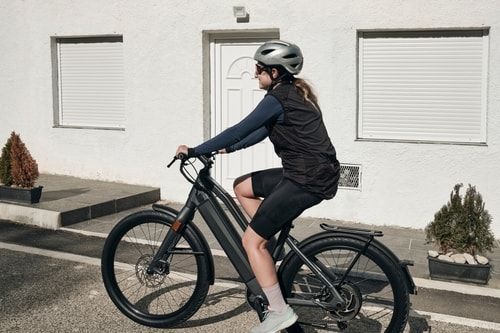
In California, age and helmet requirements for electric bicycles depend on the e-bike’s classification. These rules are designed to promote safety, especially for young riders operating bikes capable of higher speeds.
| E-Bike Class | Minimum Age | Helmet Required |
|---|---|---|
| Class 1 | No statewide age restriction. May vary under local laws(AB 1778/2234). | Required for riders under 18 |
| Class 2 | No statewide age restriction. May vary under local laws(AB 1778/2234). | Required for riders under 18 |
| Class 3 | 16 and older only | Required for all riders and passengers |
Class 3 e-bikes can reach assisted speeds up to 28 mph, so California imposes stricter rules for who can ride them. Riders must be at least 16 years old, and helmets are mandatory for everyone, including passengers.
Tip: Before allowing a child or teen to ride an electric bike, always check your city or county’s local ordinances.
Riding without a helmet? Learn about the risks, injury prevention, and helmet types in The Ultimate Bicycle Helmet Guide for Cyclists and our article Bike Accidents Without Helmets: The Risks, Laws, & Tips
Where Are E-Bikes Allowed in California?
In general, electric bikes in California are allowed anywhere traditional bicycles are permitted, but specific access depends on your e-bike’s classification and local regulations.
Here’s a breakdown of where you can and can’t ride:
- Roadways & Bike Lanes – All Class 1, 2, and 3 e-bikes are legal on California streets and in designated bike lanes. Riders must obey all standard traffic laws.
- Shared-Use Paths & Multi-Use Trails – Class 1 and Class 2 e-bikes are typically allowed, as they are lower speed and less disruptive to pedestrians. Class 3 e-bikes may be restricted.
- Sidewalks, Hiking Trails, and Recreational Paths – These areas often prohibit Class 3 e-bikes due to their higher speed. Class 1 and 2 e-bike access varies by city or county.
👉 Always look for posted signs and check local city or county e-bike laws before riding.
Even when riding legally, cyclists still face serious risks from distracted drivers, poor infrastructure, and visibility issues. Learn how to stay safer with our guide to common road dangers faced by cyclists.
If you have questions after an e-bike crash or citation, a 24/7 legal answering service can capture your details after hours so a lawyer can call you back first thing.
E-Bikes vs. Mopeds, ZEMs, and Motor-Driven Cycles
Electric bicycles aren't the only electric two-wheelers out there. Here's how they differ from mopeds, or ZEMs (Zero Emission Motorcycles).
| Feature | E-Bikes | Mopeds/ZEMs |
|---|---|---|
| Pedals | Required (fully operable pedals) | Not required |
| License Needed | No | Yes (M-1 motorcycle license) |
| DMV Registration | No | Yes |
| Insurance | Not required | Required |
| Bike Lane and Bike Path Access | Classes 1 & 2 Allowed. Class 3 may be restricted from bike trails and paths. | Prohibited |
ZEMs, defined by the California Air Resources Board (CARB), are regulated more like traditional motor vehicles. They cannot use bike paths or lanes and must be registered with the DMV.
New California E-Bike Laws & Legislation for 2025
In response to the rapid surge in e-bike use and a growing number of injuries and community concerns, California is implementing major e-bike law changes in 2025. These updates aim to close long-standing regulatory gaps by targeting unsafe modifications, clarifying e-bike classifications, and setting stricter rules around age, helmet use, and battery safety.
The new laws redefine what qualifies as a legal e-bike and restrict the sale and use of devices that exceed 750 watts, lack operable pedals, or can be modified to surpass 28 mph. Even e-bikes that were once legal may now fall outside compliance if they don't meet these new standards.
Local communities, like Orange County and Santa Barbara, have been especially vocal about the dangers of unregulated e-bike use. Learn more in The E-Bike Epidemic: Bridging the Regulatory Gaps in Orange County, CA and Updates to Santa Barbara e-bike laws.
Quick Summary of the 2025 E-Bike Law Changes
- SB 1271: Requires certified batteries, caps motor power, and bans the sale of unsafe e-bikes or unlabeled components.
- AB 1774: Bans aftermarket speed-modification kits that push e-bikes past legal limits.
- AB 2234: Allows San Diego County to ban riders under age 12 from using Class 1 or 2 e-bikes.
- AB 1778: Gives Marin County authority to set helmet mandates and raise the age limit for Class 2 e-bike riders.
Detailed breakdowns of all e-bike laws, including SB 1271 and AB 1774, are provided below.
- Pedal assist only: Class 1 and 3 e-bikes must assist only while the rider is pedaling—throttles are no longer allowed.
- Motor wattage limit: All e-bikes must operate with motor power of 750 watts or less.
- Functional pedals: All e-bikes must have fully operative pedals—without pedals, they no longer qualify as e-bikes and may be classified as motorcycles.
- Battery certification: E-bike batteries must be UL-certified by 2026 to reduce fire risks.
- Class 3 restrictions: Riders must be 16+, wear helmets, and use pedal assist only—no throttle.
- No mod kits: Selling or using devices that override speed limits or assist modes is banned.
- Local control: Each local authority has the authority to set additional restrictions. Riders must follow city-specific e-bike rules.
1. SB 1271: E-Bike & Battery Safety Regulations
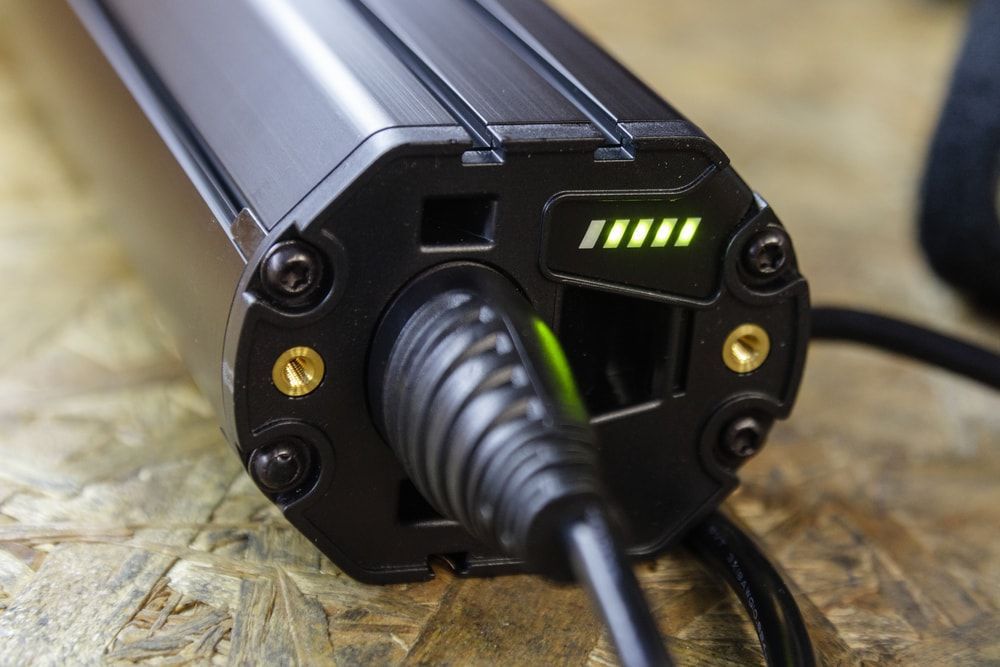
Senate Bill 1271 (SB 1271), signed into law on September 27, 2024, enforces stricter e-bike regulations throughout California. It targets unsafe modifications, improper use of electric motors, and battery safety, all in line with updated California Vehicle Code provisions.
These rules are meant to ensure that electric bicycles remain safe, legal, and within state-defined performance boundaries.
a. Updated E-Bike Classifications (Effective Jan 1, 2025)
SB 1271 redefines the technical boundaries for what can legally be sold and ridden as an e-bike in California.
New Class Definitions:
- Class 1: Must use pedal assist only. Throttle allowed only during startup (up to 3.7 miles per hour).
- Class 2: Still allows throttle use, with a top speed capped at 20 mph.
- Class 3: Pedal assist only, with top assisted speed of 28 mph and a required speedometer.
Motor power cap: All e-bikes must be powered solely by an electric motor with 750 watts or less. Any modification above this means the bike will no longer be classified under the three legal e-bike classes
⚠️ What’s No Longer a Legal E-Bike?
SB 1271 disqualifies these vehicles:
- Any bike that exceeds the speed limit of 20 mph (unless Class 3 via pedal assist).
- Bikes with motors above 750 watts.
- Bikes without fully operable pedals (such as scooters or electric motorcycles misbranded as e-bikes).
b. California e-bike battery certification requirements (Effective Jan 1, 2026)
To prevent battery-related fires, SB 1271 requires battery certification in accordance with national safety standards.
What’s required:
- All e-bike batteries must be UL-certified (e.g., UL 2849).
- Batteries must be labeled in a prominent location with certification info.
- Compliance with the California Fire Code is mandatory.
Retailers and manufacturers will be unable to sell uncertified units after January 1, 2026.
c. Penalties & Enforcement
Violating SB 1271 can lead to criminal charges. Here’s who it impacts:
- Manufacturers: Must sell e-bikes that meet compliance standards and display the correct classification numbers.
- Retailers & Online Sellers: Prohibited from offering non-compliant models.
- Rental Fleets: Non-certified bikes must be removed from service by 2028.
- Riders: May face penalties for using bikes that violate e-bike regulations, which could result in the bike being reclassified as a motor-driven cycle.
Authorities now have the power to penalize violations, which may include fines, bike confiscation, or legal charges.
d. What E-Bike Riders Need to Know
To stay compliant, riders must:
- Use Class 1 and Class 3 e-bikes with pedal assist only.
- Keep motor wattage under 750W.
- Avoid bikes without operable pedals.
- Check if your e-bike meets California law and safety standards.
- Ensure e-bike batteries are certified before 2026.
If your bike doesn’t meet the updated definition, it could be classified as a motor vehicle, requiring a license, registration, and insurance.
2. AB 2234: Local Age Limits in San Diego County
Assembly Bill 2234, signed in 2024, authorizes local authorities within San Diego County to restrict riders under 12 years old from operating a Class 1 or 2 electric bicycle.
What the Law Allows
- Local San Diego authorities can ban kids under 12 from riding Class 1 or Class 2 e-bikes in their jurisdiction.
- The law applies to both cities and unincorporated areas within San Diego County.
Why It Matters
This law was introduced in response to an increase in accidents involving children riding e-bikes without adequate control or traffic awareness. Although Class 1 and 2 e-bikes are generally considered lower risk, they can still reach speeds of 20 mph with little effort, making them potentially unsafe for young riders.
If you’re a parent in San Diego County, check your city’s ordinance before letting your child ride and electric bike. Some cities may choose to implement these restrictions, while others may not.
3. AB 1778: Stricter Rules for Class 2 E-Bike Riders in Marin County
Assembly Bill 1778 authorizes local authorities within Marin County, or the unincorporated areas of the county, to enact stricter age and helmet requirements for Class 2 e-bike riders. While the state’s existing laws require helmets for Class 3 riders and those under 18, AB 1778 allows local authorities to implement additional rules
Key Provisions
- Marin County can ban anyone under 16 from riding a Class 2 e-bike.
- It also allows mandatory helmet laws for all Class 2 riders, regardless of age.
Local Safety Focus
The bill was introduced after a series of Class 2 e-bike crashes in Marin county, many involving young teen riders. With throttle-based bikes becoming more common, local authorities sought greater control to ensure rider safety.
Even if your teen rides a Class 2 e-bike under 20 mph, they may still need to wear a helmet, or, depending on local regulations, could be banned from riding entirely.
4. AB 1774: Ban on E-Bike Speed Modifications
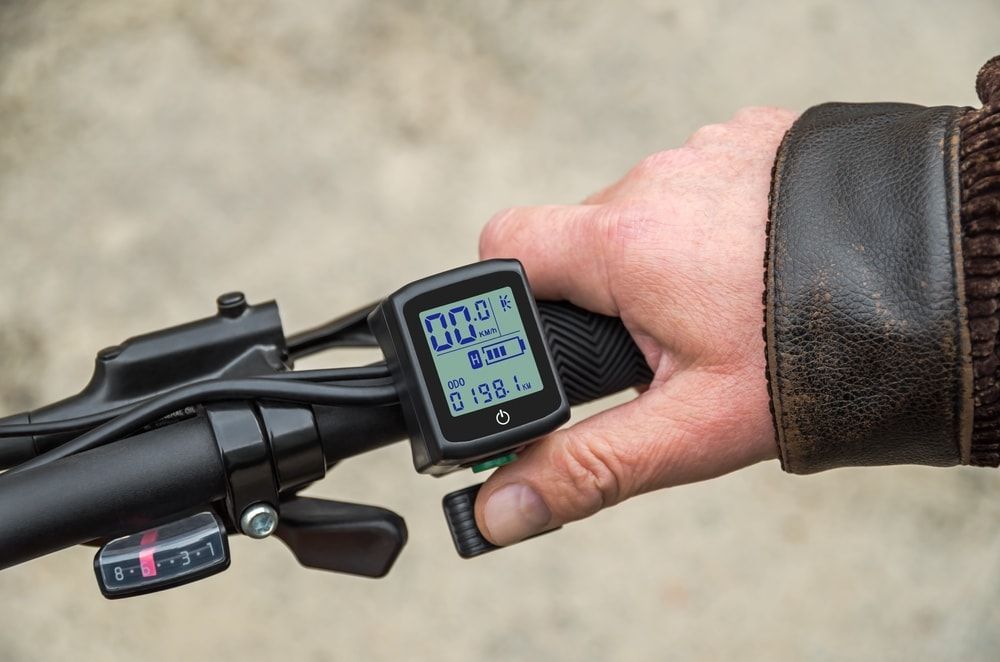
Assembly Bill 1774 (AB 1774) addresses a loophole in California’s e-bike regulations by targeting illegal speed upgrades. Signed into law on July 2, 2024, the bill prohibits the sale and use of aftermarket kits that alter an electric bicycle’s speed or motor wattage.
What the Law Covers
Before AB 1774, many e-bike riders installed kits to override speed limits pushing their bikes beyond the legal speed thresholds.
Here’s what’s now illegal:
- Selling or distributing speed-modification devices for electric bikes
- Upgrading your e-bike beyond 28 miles per hour or 750W without reclassification
- Operating a modified e-bike that no longer qualifies as a motorized bicycle
1. Equipment & Safety Standards
To reinforce compliance, AB 1774 aligns California’s e-bike safety standards with federal regulations. All electric bicycles sold must now meet:
- CPSC (16 C.F.R. 1512.1, et seq.) bicycle safety regulations
- Brake disengagement rule: The electric motor must disengage when the brakes are applied
2. No DMV Requirements If Your Bike Remains Legal
As long as your e-bike stays within legal specs, like pedal assist, operable pedals, and a motor with no more than 750W, you don’t need:
- A motorcycle license
- DMV registration
- Vehicle insurance
But if you alter your e-bike to exceed those limits, it may be reclassified as a motor vehicle or motorcycle triggering these legal requirements instantly.
Key Takeaways for Riders
- Modifying an e-bike past 28 mph or 750W? It’s no longer legal.
- Sellers can’t offer speed modification devices—online or in-store.
- If your bike exceeds class limits, you may need a license, registration, and insurance.
How California’s 2025 E-Bike Laws Compare:
Here’s a side-by-side breakdown of the key e-bike laws passed for 2025 and what each one addresses:
| Law | Focus | Key Rules |
|---|---|---|
| AB 1774 | Speed Modifications & Safety Standards | Bans speed-mod kits, requires brake cutoff systems, enforces CPSC compliance |
| SB 1271 | Battery Safety & E-Bike Classification | Requires UL-certified batteries, enforces 750W motor limit, and labeling compliance |
| AB 2234 | San Diego County Pilot Program | Allows cities to ban riders under age 12 from using Class 1 or 2 e-bikes |
| AB 1778 | Marin County Pilot Program | Allows cities to raise the age limit and require helmets for Class 2 e-bike riders |
Together, these laws aim to close regulatory gaps in California’s fast-growing e-bike landscape by promoting rider safety, reducing fire hazards, and giving local communities more control.
Looking Ahead: The Future of California E-Bike Laws
California’s new e-bike laws represent a critical shift in how the state approaches electric bicycle safety and accountability. With local pilot programs now underway under AB 1778 in Marin County and AB 2234 in San Diego County, cities are testing stricter age and helmet requirements to reduce youth injuries. The outcomes of these programs will help shape future legislation, determining whether broader statewide rules are adopted in the coming years.
At Bike Legal, we support smarter safety laws—but not at the expense of access. We believe more people should be able to choose cycling as a practical, healthy, and sustainable form of transportation. As California works to regulate electric bikes, it’s essential that lawmakers strike a balance between public safety and transportation equity. Regulations should protect vulnerable road users, not discourage people—especially young riders or lower-income families—from choosing bikes over cars.
E-bike use in California will only continue to grow. Riders, lawmakers, and advocates must work together to ensure the legal landscape supports both safety and the long-term future of active mobility across the state.
Ride Protected. Ride Safe, with Bike Legal
At Bike Legal, we represent e-bike and bicycle riders who have been injured in crashes caused by the negligence of others. As dedicated bicycle accident attorneys, we bring unmatched expertise in California bicycle law and a deep understanding of the cycling community.
Beyond legal representation, we’re committed advocates for cyclist safety, education, and responsible road sharing. If you have been injured in a bicycle accident or have questions about your rights, we can help.
If you’ve been involved in a crash or injured by a negligent driver, here’s what to do after a bicycle accident to protect your rights and preserve important evidence.
📞 Call 877-BIKE LEGAL (877-245-3534) for a FREE consultation
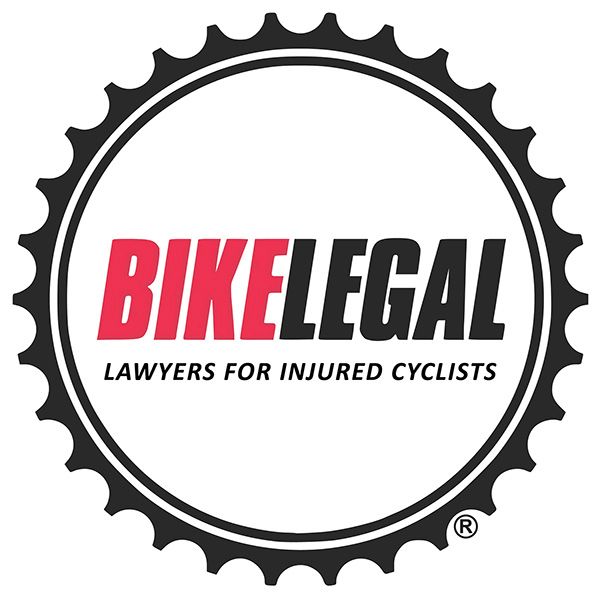
FAQs
1. How old do you have to be to ride and electric bike in California?
In California, the minimum age to ride an electric bike depends on the e-bike’s classification:
- Class 1 and Class 2 e-bikes: There is no statewide age restriction, but local laws may apply. For example, pilot programs under AB 1778 (Marin County) and AB 2234 (San Diego County) allow local authorities to prohibit young riders under certain ages (e.g., under 12 or under 16) from using these e-bikes.
- Class 3 e-bikes: Riders must be at least 16 years old by California law. Helmets are also mandatory for all Class 3 riders and passengers, regardless of age.
Always check your local city or county ordinances, as California allows municipalities to create stricter age or helmet rules to enhance safety.
2. Are electric bikes legal in California?
Yes. E-bikes are legal statewide but must meet classification standards (Class 1, 2, or 3) and follow the updated 2025 laws, including motor limits, throttle restrictions, and battery certifications.
3. What are the new e-bike laws for 2025?
California's 2025 e-bike laws introduce several important changes that affect how electric bicycles are classified, powered, and used on public roads. Key updates include:
- Class 1 and Class 3 e-bikes must be pedal-assist only – Throttles are no longer permitted on these classes.
- Motor wattage limit set to 750 watts – Exceeding this limit disqualifies the bike as an electric bicycle.
- Battery safety certifications required by January 1, 2026 – All e-bike batteries must be UL-certified to reduce fire hazards.
- Throttle banned for Class 3 e-bikes – Only pedal assist is allowed, with no throttle use permitted.
- Speed-modification kits are now illegal – Selling or installing devices that override speed or assist mode is a criminal offense.
- Class 3 e-bikes must include a speedometer and all riders must wear helmets, regardless of age.
- California e-bike speed limits are clearly defined:
- 20 mph max for Class 1 and 2 e-bikes
- 28 mph max for Class 3 e-bikes
If your e-bike exceeds the legal speed or power limits, it may be reclassified as a motor vehicle, requiring a motorcycle license, insurance, and DMV registration under California law.
4. Can I ride an e-bike on the sidewalk in California?
It depends on the city. California does not have a statewide ban on riding e-bikes on sidewalks, but many cities prohibit it, especially in downtown or business districts.
- Class 1 and 2 e-bikes may be allowed on sidewalks where bicycles are permitted.
- Class 3 e-bikes are generally not allowed on sidewalks.
- Local ordinances take priority, so always check posted signs or municipal codes.
- If sidewalk riding is allowed, ride at walking speed and yield to pedestrians.
When in doubt, it's safest to walk your e-bike on the sidewalk until you can return to a safe bike lane on the road.
5. Do you need a license to ride an electric bike in California?
No, unless your modified e-bike exceeds legal speed limits or motor output. In that case, it may be reclassified as a motor vehicle, requiring a motorcycle license, insurance, and DMV registration.
6. Are Class 3 e-bikes legal in California?
Yes, but with rules:
- Pedal-assist only (no throttle)
- Top assisted speed of 28 mph with motor assist
- Speedometer required
- Riders must be 16+
- Helmets required for all riders
7. Where can I ride an e-bike in California?
- Roadways: All classes allowed
- Bike lanes: Class 1 & 2 permitted; Class 3 may be restricted
- Multi-use trails & bike paths: Check local regulations
- Sidewalks: Often restricted—varies by city
8. What are California’s helmet laws for e-bikes?
- Class 1 & 2: Helmets required for riders under 18
- Class 3: Helmets required for all riders
9. Can I modify my e-bike in California?
Modifying your e-bike to increase speed or motor power is illegal under California law. Assembly Bill 1774 prohibits the sale and installation of speed-modification devices, and violators may face fines, penalties, or bike confiscation.
If your e-bike exceeds 28 miles per hour or has a motor rated above 750 watts, it may no longer qualify as an electric bicycle. Instead, it can be reclassified as a motor vehicle or electric motorcycle, triggering additional legal requirements.
You may be required to have:
- A motorcycle (M-1) license
- DMV registration
- Insurance coverage
Riding a modified e-bike without meeting these requirements is against the law and can result in citations or having your bike impounded. To stay compliant, only ride e-bikes that meet California’s legal definition and classification standards.
10. What are the battery requirements for electric bikes in California?
Starting January 1, 2026, all e-bike batteries must be:
- Certified by accredited labs
- Labeled in a prominent location
- Compliant with new fire safety standards
- Non-certified batteries will be banned from sale in California.
